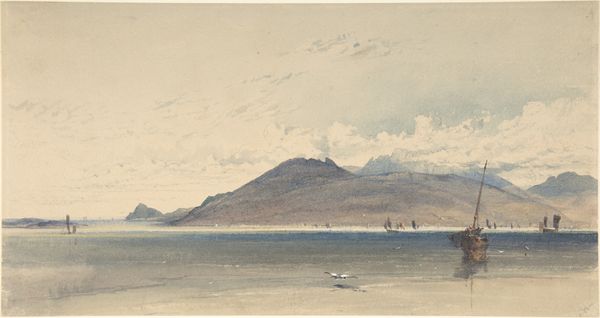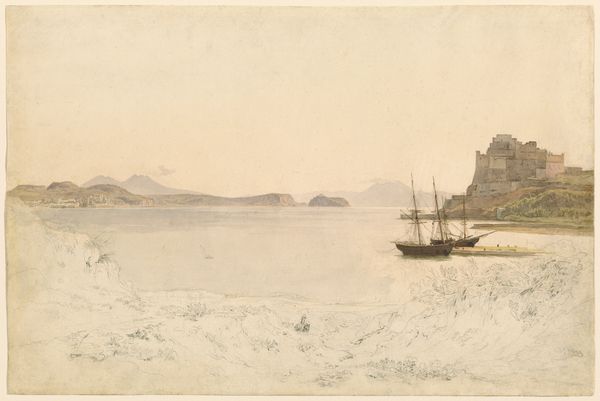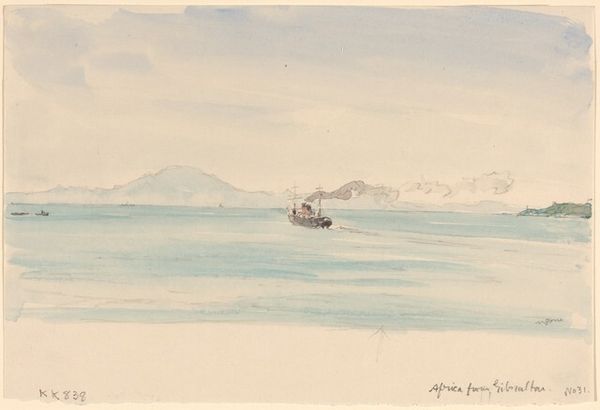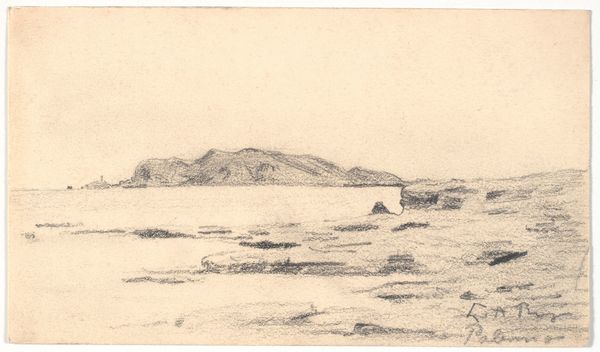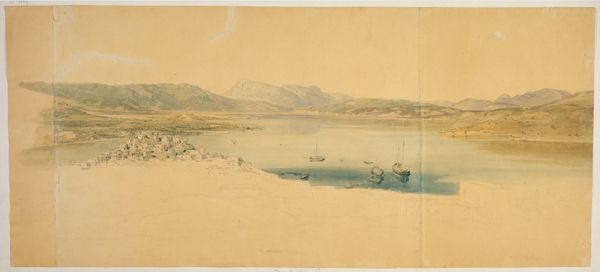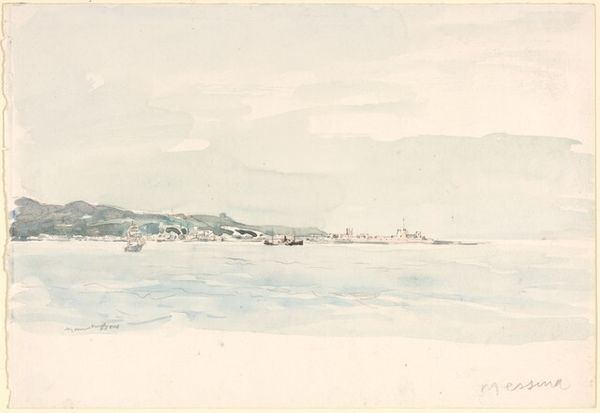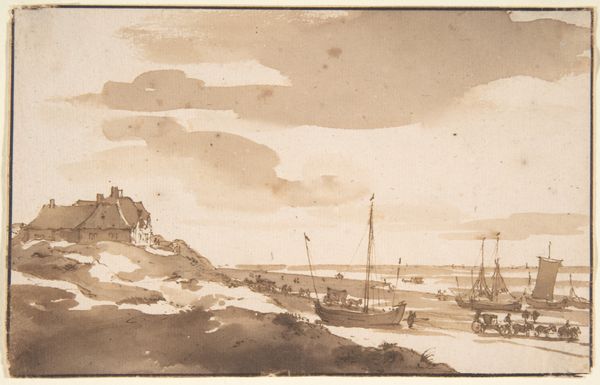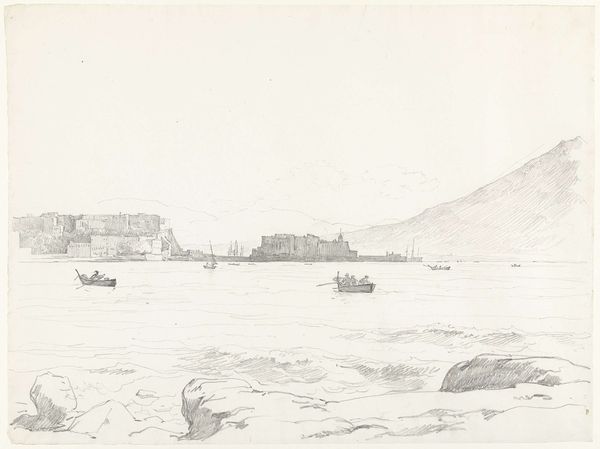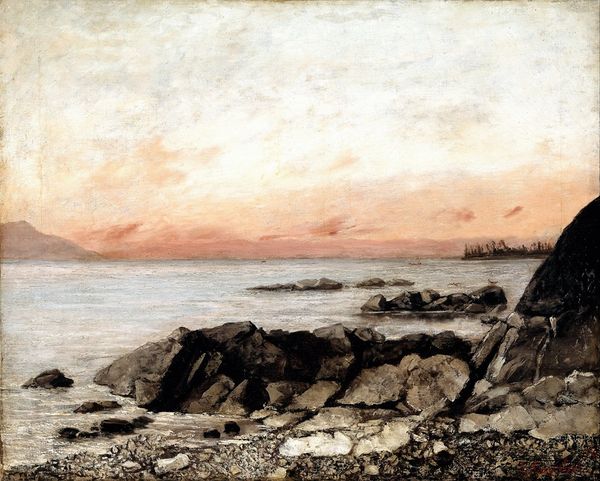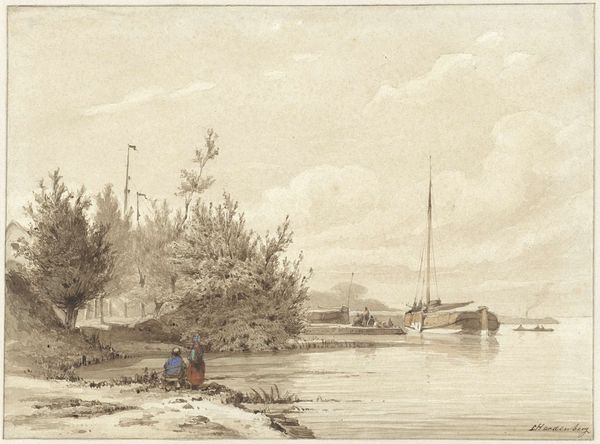
drawing, painting, plein-air, watercolor
#
drawing
#
painting
#
plein-air
#
landscape
#
nature
#
outdoor photography
#
watercolor
#
romanticism
#
botanical drawing
#
watercolour illustration
#
italian-renaissance
#
botanical art
#
watercolor
Dimensions: 213 mm (height) x 336 mm (width) (bladmaal)
Curator: Here we have Martinus Rørbye’s "View Towards Vesuvius from Procida," a watercolor painted in 1835, currently held at the SMK, the National Gallery of Denmark. Editor: Immediately, I'm struck by its muted tones—a quiet, almost melancholic feel pervades this coastal scene. There is something timeless here. Curator: Precisely. The restrained palette of ochre, grey, and pale blues allows us to concentrate on the composition. Notice how Rørbye balances the rocky foreground with the distant, ethereal form of Vesuvius. The placement of the boats guides the eye towards the center of the painting and the background elements. Editor: It makes you think about the figures in those boats—their lives, their relationship to this landscape, and Rørbye’s relation to them, the kind of person who could view people simply as part of this arrangement, this perfectly still moment. Southern Italy during this period experienced a cholera pandemic; the local society experienced constant pressure of class differences. Can the lives and histories of these working people be fairly represented in the “still life”? Curator: Rørbye was part of the Danish Golden Age movement, and this work exemplifies its focus on idealized depictions of nature and everyday life. This artist used light and shadow meticulously. Note how this watercolor's gentle gradation gives depth to the composition. This attention creates the sensation of breathing and life within the artistic space. Editor: The artist traveled to Southern Italy. So we have this Northerner creating this Southern image for presumably a Northern audience. The painting inevitably perpetuates a gaze, romanticizing and perhaps even exoticizing this place for a Denmark audience, removed from the immediate struggles of Southern Italian people. How are their voices represented, especially if we are looking from an abolitionist perspective, given the complex historical entanglements of Northern Europe’s economic prosperity with the exploitation of labor? Curator: While your point on perspective is duly noted, "View Towards Vesuvius from Procida" should be regarded as a significant art-historical artwork on its formal merits alone. It shows us not only how skilled this Golden Age artist was at the pictorial rendering of landscape elements in a distinct, refined aesthetic style that renders both light and the geological shape of mountains vividly. Editor: Indeed, Rørbye’s technical prowess is apparent, a perspective shaped by Romantic sensibilities; however, art is never created in a vacuum; situating the work within its complex socio-historical conditions can reveal profound questions about our intertwined past. It serves as a point for reflecting upon art and visuality at large.
Comments
No comments
Be the first to comment and join the conversation on the ultimate creative platform.
